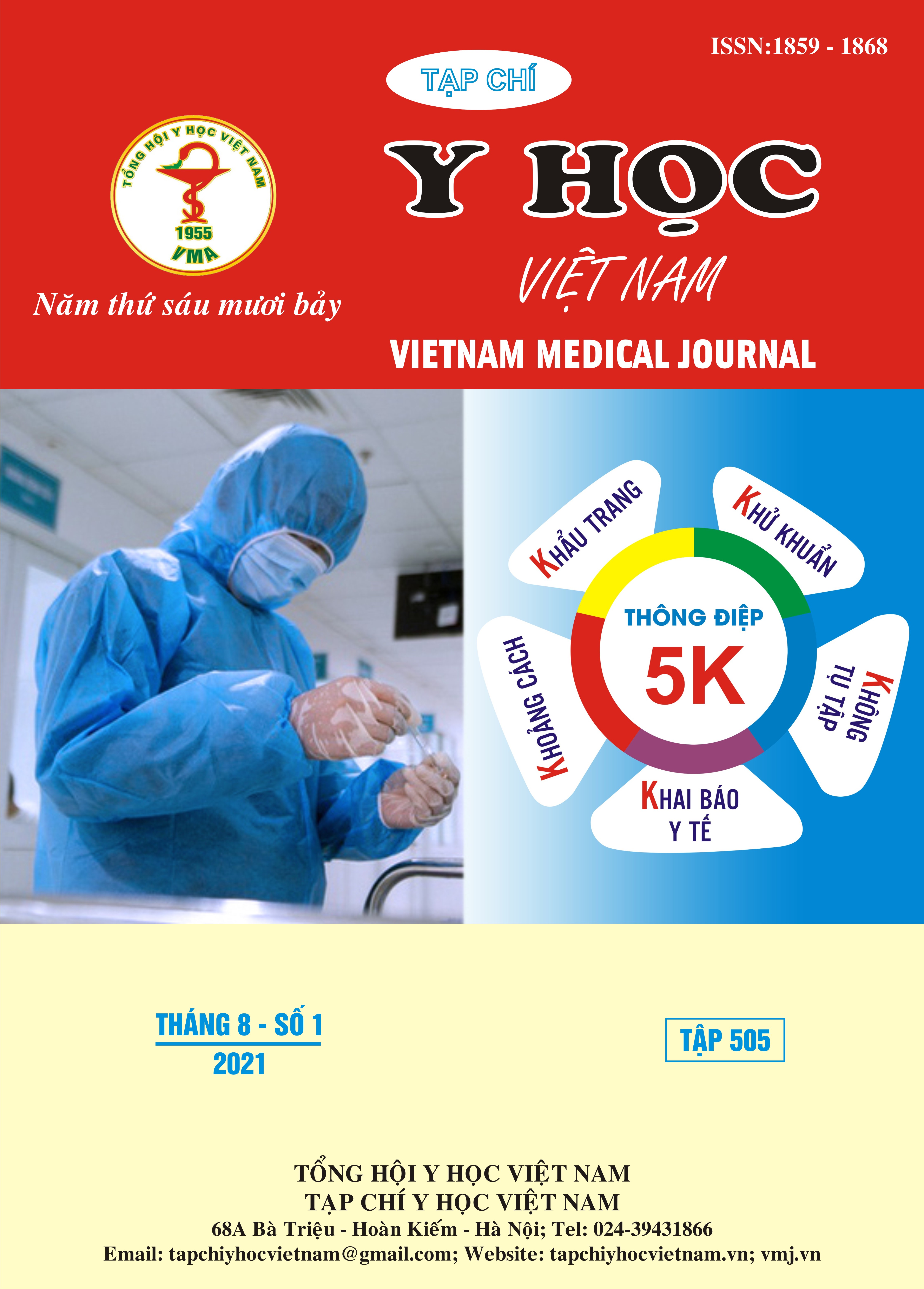VALUATION OF THE RESPONSE TO REPEATED NERVE STIMULATION TEST IN PATIENTS WITH OCULAR MYASTHENIA GRAVIS
Main Article Content
Abstract
Aim: To evaluate the response of consecutively repeated nerve stimulation tests in patients with ocular myasthenia gravis. Objects and methods: 43 patients with ocular myasthenia gravis had positive anti-acetylcholine antibody or positive neostigmine test. Results: The average age of onset of patients was 39.2 ± 17.7 (ocular myasthenia gravis), 43.1 ± 13 (generalized myasthenia gravis), the time since the onset of ocular myasthenia gravis the conversion to the whole body was 18.9 ± 59.7 months. The repetitive nerve stimulation test was positive in 28 patients (65.1%), the positive rate in ocular myasthenia gravis 30.2%, sensitivity 30.8%, sensitivity 80% for the generalized myasthenia gravis group. The sensitivity of each muscle also varies according to muscle group: trapezius muscle (61.5%), ocular muscle (53.8%), abductor pollicis brevis (30.8%), abductor digiti minimi muscle (38.5%), and sensitivities of repetitive nerve stimulation were significantly higher in the generalized myasthenia gravis according to subgroup: 90%, 86.7%, 80%, 66.7%. Repetitive nerve stimulation is associated with clinical severity according to Osserman's classification (P = 0.001). Conclusions: Repetitive nerve stimulation test is a simple and convenient test that can help diagnose myasthenia gravis faster and can detect subclinical muscle weakness.
Article Details
Keywords
Myasthenia gravis, Ocular myasthenia gravis, Repetitive nerve stimulation test
References
2. Osserman KE. (1967). Ocular Myasthenia Gravis. Invest Ophthalmol Vis Sci, 6(3), 277-287.
3. Gilhus N E, & Verschuuren J J. (2015). Myasthenia gravis: subgroup classification and therapeutic strategies. Lancet Neurol, 14(10), 1023-1036. doi:10.1016/S1474-4422(15)00145-3
4. Vincent A, & Newsom Davis J. (1980). Anti-acetylcholine receptor antibodies. J Neurol Neurosurg Psychiatry, 43(7), 590-600. doi:10.1136/jnnp.43.7.590
5. Thanvi B R, & Lo T C. (2004). Update on myasthenia gravis. Postgrad Med J, 80(950), 690-700. doi:10.1136/pgmj.2004.018903
6. Nguyễn Hữu Công. (2013). Chẩn đoán điện và ứng dụng lâm sàng: Nhà xuất bản Đại học quốc gia thành phố Hồ Chí Minh.
7. Kim K H, Kim S W, & Shin H Y. (2021). Initial Repetitive Nerve Stimulation Test Predicts Conversion of Ocular Myasthenia Gravis to Generalized Myasthenia Gravis. J Clin Neurol, 17(2), 265-272. doi:10.3988/jcn.2021.17.2.265
8. Oh S J, Jeong D, Lee I, et al. (2019). Repetitive nerve stimulation test in myasthenic crisis. Muscle Nerve, 59(5), 544-548. doi:10.1002/mus.26390
9. Witoonpanich R, Barakul S, & Dejthevaporn C. (2006). Relative fatigability of muscles in response to repetitive nerve stimulation in myasthenia gravis. J Med Assoc Thai, 89(12), 2047-2049.
10. Jing F, Cui F, Chen Z, et al. (2015). Clinical and Electrophysiological Markers in Myasthenia Gravis Patients. Eur Neurol, 74(1-2), 22-27. doi:10.1159/000431284


